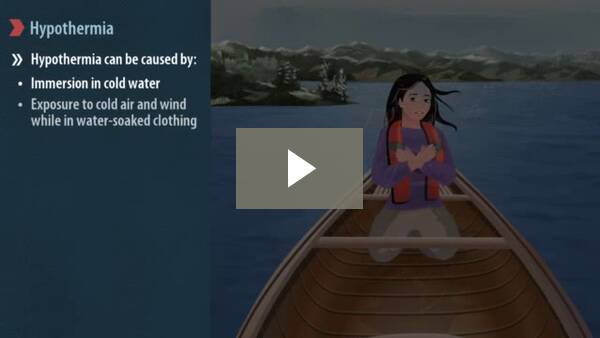Hypothermia
Hypothermia is a drop in core body temperature, caused by prolonged exposure to abnormally low temperatures, such as immersion into cold water.
Hypothermia can be caused by:
- Immersion in cold water
- Exposure to cold air and wind while in water-soaked clothing
- Prolonged exposure to low water and air temperatures
- Hypothermia sets in when core body temperature drops below 35.0° Celsius
Cold Water Shock
Even more dangerous is cold water shock, which likely causes more fatalities than hypothermia. Cold water shock occurs when a person experiences sudden, unexpected immersion into water 15° or below. For three to five minutes after sudden immersion in cold water, a person will gasp for breath and may also experience muscle spasms and a rise in heart rate and blood pressure. The instant muscle spasms and gasp reflex can cause the victim to involuntarily ingest water and drown. A rise in heart rate and blood pressure can result in a heart attack or stroke.
1-10-1
1-10-1 is a simple way to remember the first three phases of cold water immersion and the approximate time each phase takes.
1- Cold shock: An initial deep and sudden gasp followed by hyperventilation and a rise in heart rate. Cold shock will pass in about one minute. During that time concentrate on avoiding panic and getting control of your breathing. Wearing a life jacket during this phase is critically important to keep you afloat and breathing.
10 – Cold incapacitation: Over approximately the next ten minutes, you will lose the effective use of your fingers, arms and legs for any meaningful movement. Swim failure will occur within these critical minutes and if you are in the water without a life jacket, drowning will likely occur.
1- Hypothermia: Even in ice water, it could take approximately one hour before becoming unconscious due to hypothermia. You should understand the techniques of how to delay hypothermia, self-rescue and calling for help in order to increase your chances of survival.
Cold water can also paralyze your muscles instantly–making it extremely difficult to put on a life jacket or PFD.
It is important to remember that cold water shock can occur throughout the year, even during warm summer months when water temperatures can remain lower than outside air temperatures.




